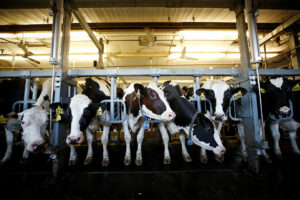Ensuring orderly inflation expectations

After two months of steady inflation at 3%, the Philippine Statistics Authority (PSA) reported that inflation climbed to 4% in March, right on the upper end of the official target of 2-4%. High imported fuel prices spilled over to domestic transport, food and utility prices.
This is not exactly unexpected.
For the Bangko Sentral ng Pilipinas (BSP) itself, as early as its Feb. 17 policy meeting, had projected 3.7% inflation for 2022 and 3.3% for 2023. In its March 24 policy meeting, the BSP further increased its forecasts to 4.3% and 3.6% for the next two years. With an actual average inflation rate of only 3% for January and February, the BSP expected faster price movements for the rest of the year through the next.
Without question, the BSP’s outlook was driven by the unprecedented rise in both global crude oil and non-oil prices as well as the sharp depreciation of the peso. More positive base effects are also expected for the next three quarters through the end of 2022 to further motivate higher inflation. Finally, a prolonged geopolitical conflict in Eastern Europe could only result in elevated prices of corn, wheat, nickel, and fertilizer.
What is unexpected is the BSP’s decision to keep its policy rate at 2%. Against the actual average inflation of 3.4% for the first quarter, the policy rate is negative in real terms. Against the forecast for 2022 of 4.3%, the BSP would breach the target. Next year, at 3.6%, inflation is uncomfortably close to exceeding the inflation target.
What underlies the BSP’s patience to wait out all these supply shocks must be the view that they are just transitory. This has been pervasive since last year. For instance, the IMF’s World Economic Outlook of January 2022 assumed that if “inflation expectations stay well anchored, inflation should gradually decrease as supply-demand imbalances wane in 2022.”
Until today, with economic scarring still being felt from COVID-19 and the supply shocks arising from the Eastern European conflict, some think tanks like Pantheon Macroeconomics, continue to entertain the notion that the inflation surge is transitory. “(It) is not expected to last long, even taking into account the lagging impact of higher oil prices following the Russian invasion of Ukraine.”
This point of supply-driven inflation being transitory is the same point that differentiates European Central Bank President Christine Lagarde from US Fed Chairman Jerome Powell. Lagarde argues that such “drivers are likely to fade over the medium term, which is the horizon that matters for monetary policy.” For Powell, even “the recent rise in COVID-19 cases… poses increased uncertainty for inflation.”
Anchoring central bank policy on what is believed to be just transitory supply shocks could be problematic. What if those exogenous supply shocks prove to be more durable, more lasting than Lagarde’s policy horizon of monetary policy?
It would be useful to remember that inflation surged when the pandemic began to ease and mobility improved with the lifting of lockdowns across the world. Before the global reopening, consumer savings and domestic liquidity expanded with ultra-easy monetary and fiscal policies. Our experience in the Philippines consisted of five successive quarters of negative growth before the economy shaped up starting in the second quarter of 2021. No monetary policy action seemed required because the PSA was generating benign inflation rates while the economy remained fragile for most of the quarters during the pandemic. In the middle of 2021, when the economy showed greater resilience and inflation peaked at 4.4% in August, it had become a more difficult call for the monetary authorities.
But there is an interesting economic piece that came out in January 2022 from two finance professors, Francesco D’Acunto of Boston College and Michael Weber of the University of Chicago (“Rising inflation is worrisome. But not for the reasons you think,” Center for Economic Policy Research). Consumers’ inflation expectations could explain the recent escalation in consumer prices and inflation.
The argument is that price surges are concentrated in a few commodities which are typically consumed by ordinary households. But for central banks, this phenomenon is normally ignored, especially by those which focus on core inflation based on trimmed means and medians. Unfortunately, inflation expectations of consumers are based precisely on those few commodities whose price movements are rather rapid. Such inflation expectations could be self-fulfilling. Consumers could spend more on these commodities. Today in the Philippines, the higher oil and food prices could drive demand for higher transport fares and in turn, higher wages. These price developments are likely to cause firms’ marginal costs to increase and ultimately pass this on through to higher prices.
Here, some non-monetary measures have been put in place to prevent higher fuel costs from leading to higher transport fares, and to break the wage-price spiral. But our limited budget may also set a ceiling on mitigation measures. The two professors suggest that central banks may wish to tighten monetary policy or reduce their balance sheet, but this risks triggering another recession, if the timing is off. The other option is to engage in laymanized communication outreach programs directed to ordinary consumers who may not be familiar with monetary policy. Central banks could do both.
However, it looks like there are now indications that supply shocks are more long lasting. The March inflation reading is one. As of this month, the various Regional Tripartite Wage and Productivity Boards are busy reviewing various petitions for higher minimum wages. It has been four years since the last adjustment. A number of transport associations, while withdrawing their initial petitions for an increase in the minimum fare, would also like to restore the original minimum fare to P10. The Government’s pledge to increase the subsidy to drivers and operators of public utility vehicles is the only reason that prevents the transport group from reviving their petitions.
If we see a prolonged crisis in Eastern Europe and elevated fuel prices, it is not impossible to see second round effects. The BSP itself admitted and described the geopolitical crisis as a “significant headwind” to the global economic recovery and consequently “on inflation through transport fares, wages and food prices.”
If in the past this remote dynamic could be dismissed as too remote and indirect, today the BSP has indicated it is ready to take preemptive action if inflation expectations are at risk of being de-anchored. True, its report on private-sector inflation forecasts indicates higher inflation expectations but is still anchored on the 2-4% inflation target. But the same respondents also indicate that the risks to their outlook are more on the upside. A preemptive move may therefore be warranted.
Which brings us to Charles Goodhart of LSE and Manoj Pradhan of Talking Heads Macroeconomics (“What may happen when central banks wake up to more persistent inflation?,” Center for Economic Policy Research, October 2021) who suggested that a necessary but “sudden policy reversal could lead to severe downturns in financial markets and significantly damage public sector balance sheets.”
This is a possibility when, after months of keeping policy rates steady, central banks realize those supply shocks are more than transitory, that inflation expectations have been de-anchored and they are looking at a more persistent inflation with second round effects in real, labor, and financial markets.
Goodhart and Pradhan propose the preparation and announcement of a monetary policy plan even if it is still tentative. They propose a specific way to implement it: “symbolic tiny increases in nominal interest rates in the immediate future.”
It is also important for central banks to start thinking how such an increase in nominal rates could affect both real and financial markets by their own, even as the real interest rates may remain negative. It will take time before the real rates reach zero or positive. Finally, some decisions have to be made on central banks’ balance sheets as this affects the monetization of public debt and its implications on central bank independence and credibility of its monetary policy.
The point of Goodhart and Pradhan is to convince the market “that an orderly evolution is not just possible, but likely.”
This is how to anchor inflation expectations and keep price movement within the official target. We need this very badly in the Philippines.
Diwa C. Guinigundo is the former deputy governor for the Monetary and Economics Sector, the Bangko Sentral ng Pilipinas (BSP). He served the BSP for 41 years. In 2001-2003, he was alternate executive director at the International Monetary Fund in Washington, DC. He is the senior pastor of the Fullness of Christ International Ministries in Mandaluyong.




